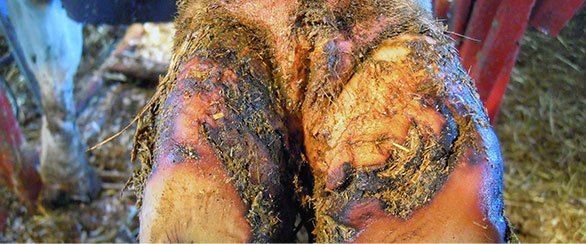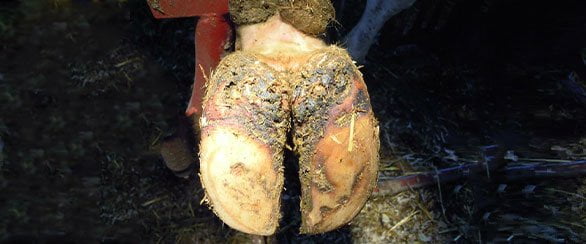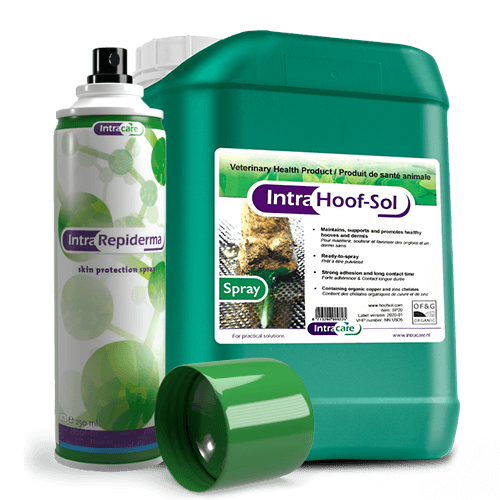About
Interdigital Dermatitis (ID) is like wet eczema and has a characteristic bad odour. Infections in the interdigital skin, particularly in the bulb area, cause extra blood circulation in the bulb area. This then causes extra horn formation. The extra horn formation leads to V-shaped splits in the bulb area.
This disorder is seen most frequently when the animals are housed inside and exposed to wet conditions. It is most commonly found on the hind feet of dairy cows.
What is Interdigital Dermatitis in cows?
The clinical signs for ID are the typical smell and wet heels. This disease is often mentioned by a different name, for example, slurry heel or heel erosion. The ID should not be confused with Digital Dermatitis. That being said, these two diseases often show up in the same herd.
Open skin Interdigital Dermatitis (ID) is like wet eczema and has a characteristic bad odor. Infections in the interdigital skin, particularly in the bulb area, cause extra blood circulation in the bulb area. This then causes extra horn formation. The extra horn formation leads to V-shaped splits in the bulb area.
In other words this disorder is seen most frequently when the animals are housed inside and exposed to wet conditions. In conclusion, it is most commonly found on the hind feet of dairy cows.


What causes Interdigital Dermatitis?

How to manage Interdigital Dermatitis?
Manage Interdigital Dermatitis is to hoof trim the herd regularly (2-3 times per year). The excess horn and ridges in the bulb area need to be removed to avoid sole separation and development of other hoof diseases, for example, a sole ulcer.
Repiderma is a registered VHP product in Canada and can be used to promote healthy skin. In addition, Hoof Sol Bath and The Intra Eco Bath are also VHP products that are specifically intended for footbaths.
How to prevent it?
This disease can be prevented by keeping the alleys clean and dry. Therefore, overcrowding of the barn is not recommended. Ensure that the cows have dry bedding and proper ventilation to achieve a fresh barn climate.
Regular footbaths and spraying sessions are recommended. Ask your hoof trimmer for a recommended protocol that works for your herd. My Hoof Disease Chart provides you with a reference to diagnose any hoof problem in cows.
